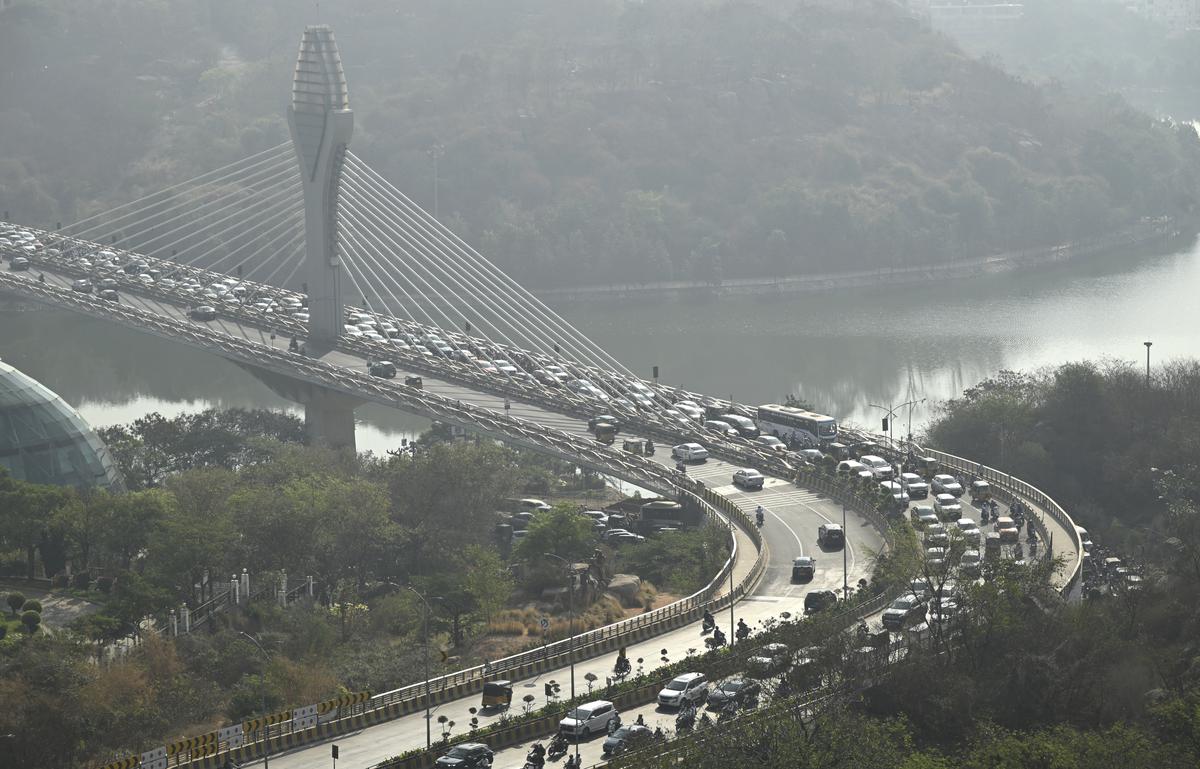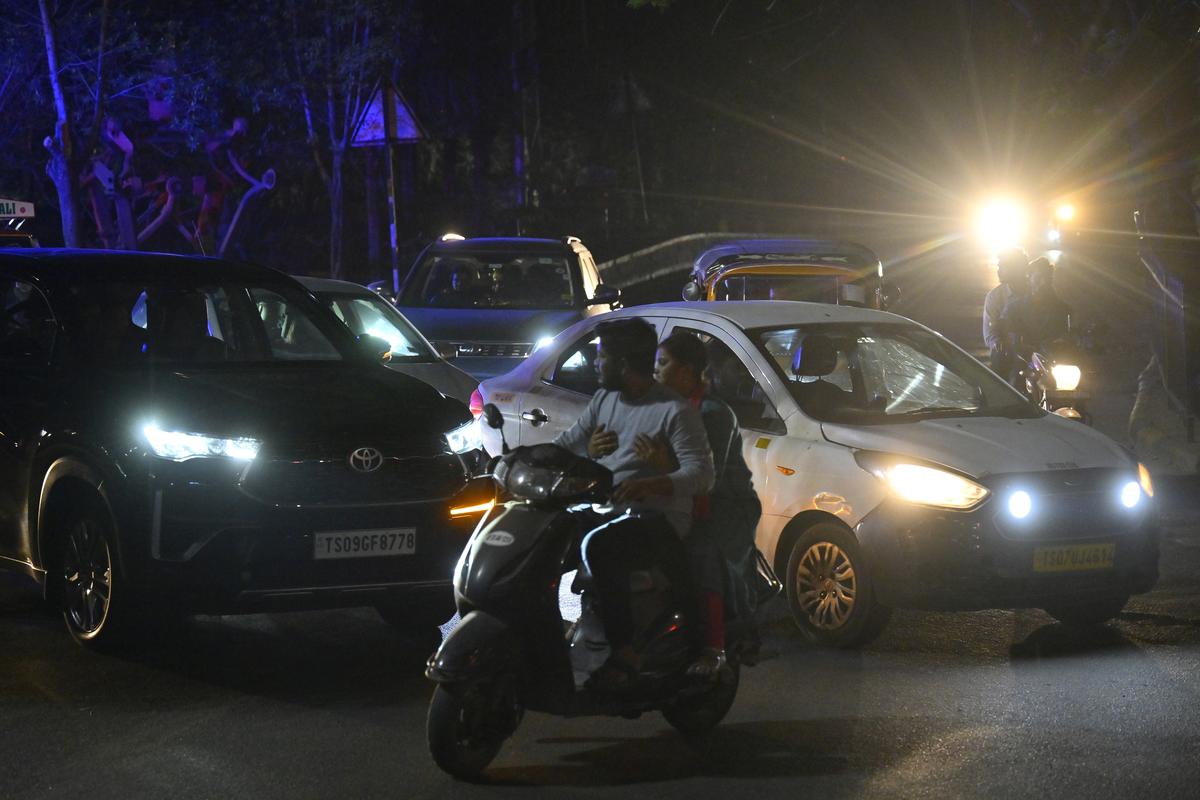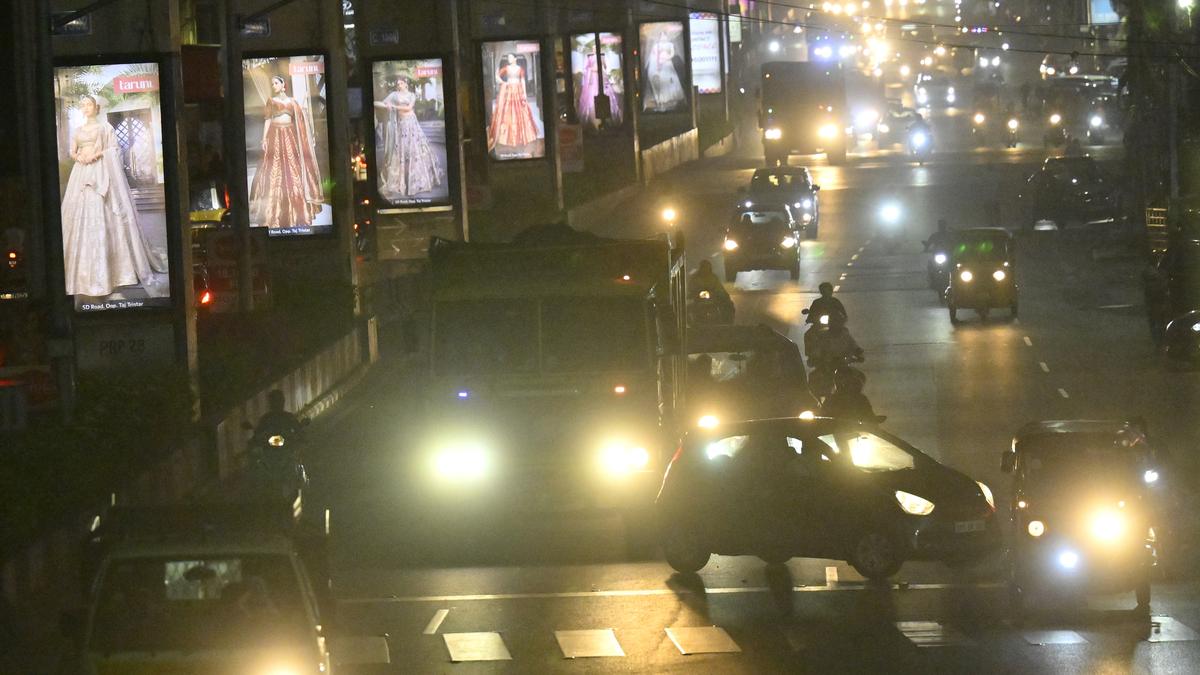The night of January 28 shimmered with devotion and festivity as the Muslim community in Hyderabad gathered to observe Shab-e-Miraj, the first sacred night of worship before Ramzan. At Bahadurpura crossroads in Old City, the rich aroma of biryani curled through the air, wafting from ‘AK Caterers & Cooking Services’ where Mohammed Ilyas battled the chaos of a bustling kitchen. The day had been relentless — orders piled up, customers crowded in, and the rhythmic clatter of pots echoed through his busy office.
Outside, his only son, 10-year-old Mohammed Ahmed, roamed the neighbourhood with his closest friends — 15-year-old Maaz and 17-year-old Syed Imran. Their laughter rippled through the evening air, carefree and unguarded. As the call to prayer echoed through the alleys around dusk, the boys made their way to the mosque, their young voices blending into the city’s solemn chorus of faith. At home, Ilyas’ wife waited for the father-son duo to return for dinner. She called up Ahmed, who informed her that he was heading to Hashtam Khan Masjid for another round of prayers. In reality, the three young boys had other plans — a late-night joyride through the city, chasing the thrill of speed and freedom. They reached out to another childhood friend, Mohd Owais, who chose to stay home, blissfully unaware of the twist of fate that awaited.
An hour and a half later, his phone rang, shattering the night’s calm. The voice on the other end was choked with grief — his best friend was no more.
On the newly inaugurated four-kilometre Aramghar flyover, which lacked CCTV surveillance, the boys’ swanky two-wheeler allegedly spun out of control. The bike crashed into a streetlight pole, the impact hurling them against the divider. The force was brutal. There were no second chances.
Around midnight, Ilyas’ phone rang. He expected to hear his son’s voice, maybe an apology for staying out late or a promise to be home soon. Instead, he was met with the panicked, trembling voice of Quadri’s mother, Munwar Unnisa. There had been an accident. In that moment, the night grew unbearably heavy.
Two-wheeler and four-wheeler drivers jump signals in the absence of traffic police personnel at a junction in Hyderabad.
| Photo Credit:
NAGARA GOPAL
Seated in his office — a modest yet dignified room with a three-seater couch, a cocobolo desk, and his chair — Ilyas recounts the night that shattered his world. His hands tremble as he wipes tears from his eyes, his voice barely steady. “We rushed to the spot,” he says, his words heavy with grief. “The police told us that passersby had taken the boys to Osmania General Hospital,” he pauses, swallowing the lump in his throat before adding, “We went there directly.”
Nothing could have prepared him for what he saw next. “When I finally saw my son’s body…,” he says as his voice chokes. “It felt like the ground had slipped from under my feet. Blood covered his tall frame. His young, innocent face was unrecognisable.” His breath hitches, his anguish raw and unfiltered. “I didn’t know what to do. I wish they never had the two-wheeler that day. I wish some traffic police personnel had stopped them,” he sighs.
Owais, who chose not to join the trio that night, is still struggling to accept the harsh reality: “We grew up together . We were more than friends, we were like brothers. We never talked much about the future, but we did share one dream… we wanted to build a house together.”
Tragic toll of night-time commute
As the city winds down and the hum of traffic fades, a deadly paradox emerges. The very roads that promise smooth, easy travel at night turn death traps. Data reveals a chilling trend — nearly half of all road fatalities in 2024 occurred between dusk and dawn.
According to traffic police records from the tri-commissionerates, 960 lives were lost in overnight crashes last year, accounting for 49.48% of all road accident deaths for 2024. The statistics paint a grim picture of the city’s nightlife, raising serious concerns about speeding, reckless driving, and inadequate night-time enforcement.
Among the three commissionerates, Cyberabad recorded the highest toll with 481 deaths from 1,898 accidents between 6 p.m. and 6 a.m. Rachakonda followed with 395 deaths in 1,578 accidents, while Hyderabad city registered 84 deaths for the 12-hour period.
Every day, 18 lives are lost on Telangana’s roads — tragedies that are often preventable. According to the latest data from the Telangana Transport Department, the State accounts for 4.56% of the country’s total road accidents and 4.57% of all fatalities, placing it among the top 10 most accident-prone States in India.
The odds of surviving a crash in Telangana are bleak. With a fatality rate of 29.81% per accident — slightly above the national average of 29.5% — nearly one in three accidents results in death.
Ahmed’s death is not an isolated incident. Every other day, families in Hyderabad wake up to the news of losing a loved one in a road accident. Since its inauguration on January 6, the Aramghar flyover alone has witnessed three accidents, one of them fatal, according to information shared by the Rajendranagar and Bahadurpura traffic police.
Just three days after Ahmed’s fatal crash, on February 1, another tragedy unfolded — this time, barely eight kilometres from the previous accident site.
The air still carried traces of wedding laughter as V. Jaswant and Bhoomika Reddy, young doctors in their mid-20s, were driving home through the quiet streets of Khanapur, Narsingi, in the city. Speeding down an empty stretch, their hatchback suddenly veered out of control, slamming violently into a hoarding pole on the road divider. The silence of the night was shattered — first by the screech of tyres, then by the wail of sirens, and finally, by the cries of grieving families.
Jaswant died instantly, his dreams and ambitions wiped out in a heartbeat. Beside him, Bhoomika lay critically injured, her body broken but her will to live fighting on. For days, doctors battled to save her as loved ones clung to hope outside the ICU. But, on February 9, after an excruciating battle, she too succumbed to the catastrophic neurological damage caused by the crash.
Jaswant and Bhoomika were house surgeons at Kamineni Hospital in L.B. Nagar, standing at the threshold of promising medical careers. Yet, like so many before them, their story became just another statistic —two more lives lost to Hyderabad’s roads, while the city moved on, unchanged.
Lack of enforcement
Rajesh Kumar, a member of the Traffic Forum of the Society for Cyberabad Security Council, points to speeding as one of the biggest culprits. The thrill of an open road, coupled with the urge to test limits, often leads drivers, especially younger ones, to push high-powered vehicles they barely have experience with.
“The growing trend of automatic cars with rapid acceleration adds to the challenge, as drivers overestimate their control and react too late when things go wrong,” he explains.
Compounding this issue is the lack of enforcement during late hours. Most traffic signals operate on a free-run mode, meaning drivers assume an uninterrupted passage, increasing the risk of high-speed collisions.
Cyberabad Joint Commissioner (Traffic) D. Joel Davis agrees, adding that a majority of accident cases stem from the driver’s behaviour. “Unlike daytime, when congestion forces vehicles to slow down, the night offers wide, empty stretches that encourage overspeeding,” he says.
Self accidents, often involving two-wheelers, are on the rise due to drowsy driving, overspeeding and poor vehicle conditions, with many cases involving collisions with dividers or trees, he points out.
Enforcement challenges
As night falls, the city’s roads become a free-for-all, patrolled by a skeletal police force struggling to curb reckless driving. While enforcement levels vary across the tri-commissionerates, one thing is clear: there simply aren’t enough officers on duty.
Figures suggest that enforcement during the day is between 15-25 times higher as compared to the night across all three commissionerates.

Keeping traffic signals operational throughout the night would also compel drivers to slow down, breaking the illusion of a free run, suggests Rajesh Kumar, a member of the Traffic Forum of the Society for Cyberabad Security Council.
| Photo Credit:
RAMAKRISHNA G.
In Cyberabad, about 30 officials are tasked with patrolling the vast road network between 8 p.m. and 8 a.m. This number is about 450 at any given hour of the day.
Meanwhile, in Hyderabad, between 30 to 40 officers hit the streets, but in two short shifts — 10 p.m. to midnight and 6 a.m. to 8 a.m., leaving a critical gap in enforcement during the deadliest hours of the night. This is in stark contrast to the 1,720 officials deployed across 355 key intersections and junctions (duty points) in two shifts from 8 a.m. to 10 p.m.
In Rachakonda, of the total 600-odd traffic cops, about 25 are deployed during the night at main junctions to handle movement of inter-State and inter-city buses.
“The Vijayawada bus stop in L.B. Nagar is one such junction,” said DCP II (traffic) Rachakonda, Sreenivasulu. However, this still leaves the majority of the city roads unmonitored and vulnerable to speeding, reckless driving, and fatal crashes.
With such limited oversight, Hyderabad’s night roads become a playground for reckless driving, where speed limits are ignored, and accidents occur unchecked.
Davis agrees that the lack of police presence encourages violations like signal-jumping, wrong-side driving, and triple riding. “We are planning to increase the number of traffic marshals, and if we have adequate manpower, we plan to strategically deploy them at accident-prone spots like Wipro Junction and Aramghar flyover,” he explains.
Each accident is being closely analysed, focusing on factors like road illumination and CCTV camera coverage, while concerns are being addressed promptly, he adds.
Bridging the gaps
A visible police presence is essential to deter reckless driving, especially near pubs, clubs, and other late-night hotspots. Strategically placed warning hoardings, flashing safety messages, reminders at parking spots, and surveillance cameras with active monitoring can create a sense of accountability, suggests Kumar.

Beyond enforcement, public awareness is key — targeted campaigns and consistent safety reminders at high-risk zones could make a difference.
| Photo Credit:
NAGARA GOPAL
Keeping traffic signals operational throughout the night would also compel drivers to slow down, breaking the illusion of a free run.
Beyond enforcement, public awareness is key — targeted campaigns and consistent safety reminders at high-risk zones could make a difference.
“To curb early morning accidents and ensure road safety, we have deployed special night teams at key junctions across Hyderabad since mid-January,” says Sai Kumar, a sub-inspector with the Hyderabad Traffic Police.
“An ASI or SI-rank officer, along with a team of 7-10 constables and home guards, conducts vehicle checks between 3-4 a.m. to slow commuters down. While major junctions like NTR Bhavan, Masab Tank, and Punjagutta signal have night constables, other signals flash amber lights to alert motorists,” he explains.
If you cannot put people in their place, put technology in place, suggests Kamal Soi, member of National Road Safety Council, Ministry of Road Transport and Highways, Government of India.Smart surveillance can ensure safer roads without the need for round-the-clock human intervention, he suggests.
“Police must extend their surveillance to night-time traffic enforcement. While traffic volume is lower at night, a dedicated shift of officers could help curb reckless driving. Hyderabad should leverage its technological capabilities to enforce speed limits effectively. Advanced cameras equipped with Automatic Number Plate Recognition can detect speeding vehicles without requiring a physical police presence. These systems can automatically issue e-challans, ensuring swift penalties for violators. In cities across Europe, offenders receive instant notifications on their registered mobile numbers, a system Hyderabad could easily adopt,” Soi says.
Published – February 14, 2025 08:35 am IST
